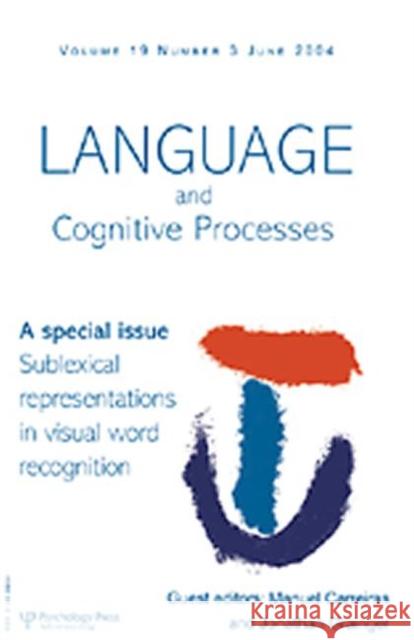Sublexical Representations in Visual Word Recognition : A Special Issue of Language And Cognitive Processes » książka
Sublexical Representations in Visual Word Recognition : A Special Issue of Language And Cognitive Processes
ISBN-13: 9781841699752 / Angielski / Miękka / 2004 / 152 str.
Sublexical Representations in Visual Word Recognition : A Special Issue of Language And Cognitive Processes
ISBN-13: 9781841699752 / Angielski / Miękka / 2004 / 152 str.
(netto: 170,08 VAT: 5%)
Najniższa cena z 30 dni: 176,25
ok. 22 dni roboczych
Bez gwarancji dostawy przed świętami
Darmowa dostawa!
This special issue samples the state of the art in research that attempts to describe the functional units that intervene between low-level perceptual processes and access to whole-word representations in long-term memory during visual word
This special issue samples the state of the art in research that attempts to describe the functional units that intervene between low-level perceptual processes and access to whole-word representations in long-term memory during visual word recognition. The different articles in this special issue cover various candidates for such processing units, defined in terms of orthographic, phonological, or morphological information. The most obvious candidate in terms of orthographic information is the individual letter. One article examines the way in which a word's component letters are combined in the correct order during early orthographic processing. At a slightly higher level of representation, several articles provide a focus on the role of syllabic representations in the processing of polysyllabic words, and examine the extent to which such syllabic representations are orthographic or phonological in nature. One article provides evidence concerning the role of interfixes in the processing of compound words, thus addressing the issue of how morphological representations exert their influence on the word recognition process. Altogether, the papers included in this special issue report a series of challenging findings that cannot be ignored by current computational models of visual word. Evidence is provided in favour of more flexible orthographic coding schemes that are typically used in models of visual word recognition. The syllabic effects that are reported call for a syllabic level of representation that is absent in the vast majority of computational models, and the effects of paradigmatic analogy in processing morphologically complex words should help limit the possible ways of representing morphological information in the visual word recognition system.











